Director John Waters has pushed the boundaries of film for six decades, in projects such as “Hairspray,” “Pink Flamingos,” and “Serial Mom.” Now the Tinseltown legend is getting his due. On Monday, he was honored with a star on the Hollywood Walk of Fame. His body of work is also the subject of a new exhibit at the Academy Museum of Motion Pictures called “John Waters: Pope of Trash.” It features costumes, original storyboards, handwritten scripts, and runs through August 2024.
Over the years, Waters has gone by many names: the Duke of Dirt, the Anal Ambassador, the Puke King. He was even anointed the Pope of Trash by novelist William S. Burroughs. Much of it stems from his often controversial work.
Nowadays, to receive such mainstream acclaim, Waters says it’s a sign of the times: “It's wonderful. I haven't changed. The American sense of humor has changed. People are, I think, willing to laugh at everything that's so bad these days because what else can you do? And humor is how you get people to change. Humor is how you get people to listen, not lecturing them, not telling them what to do. Make somebody laugh. They'll listen.”
In his youth, Waters grew up empathizing with Disney villains and catching movies at the local drive-in movie theater, where he could drink beer, have sex, and watch exploitation films. As a burgeoning filmmaker, it all became the driving force of making what he describes as exploitation films for art theaters.
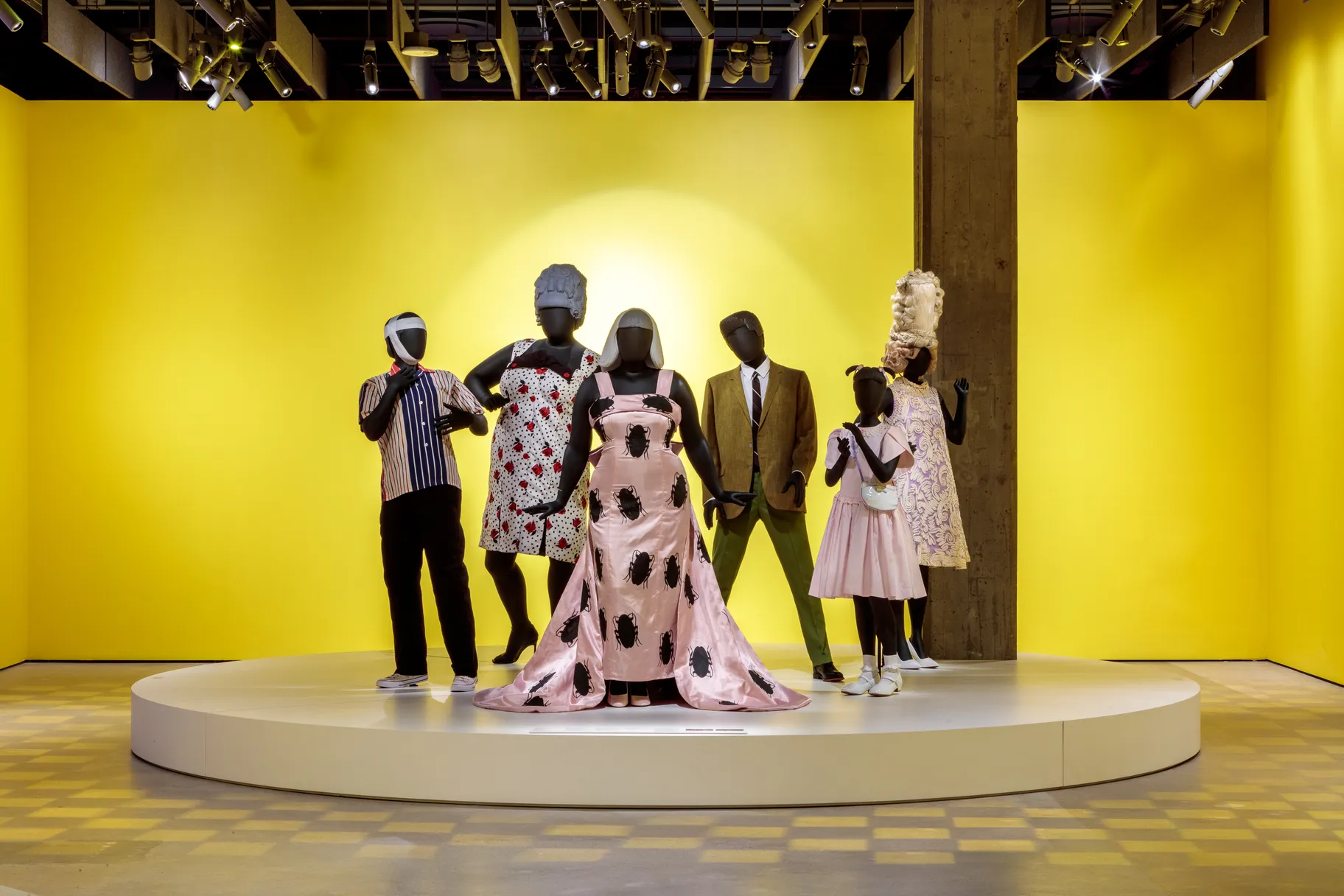
These costumes are from the 1988 film “Hairspray,” starring Ricki Lake and Divine. Photo by Charles White, JW Pictures. Courtesy of the Academy Museum.
At the center of his work, as Waters explains, is the desire to make fun of what he loves. “I made a joke on a true crime movie, ‘Serial Mom,’ before that was even a genre. I made a sexploitation comedy, ‘A Dirty Shame.’ I made a crime bio-picture, ‘Female Trouble.’ ‘Pink Flamingos’ was an exploitation film. “Multiple Maniacs’ was a hippie horror movie.”
Waters even points to “Hairspray,” which he describes as a “trojan horse that snuck in American schools.”
He continues, “Still, nobody's given me trouble about drag queens because it's confusing because Edna is played by a man. But that's the secret between the actors and the audience: Tracy Turnblad doesn't think her mother's trans, so they don't know how to handle it because it's too confusing. … Even stupid racists like it. They don't believe it's making fun of them. They don't even get that they like the music.”
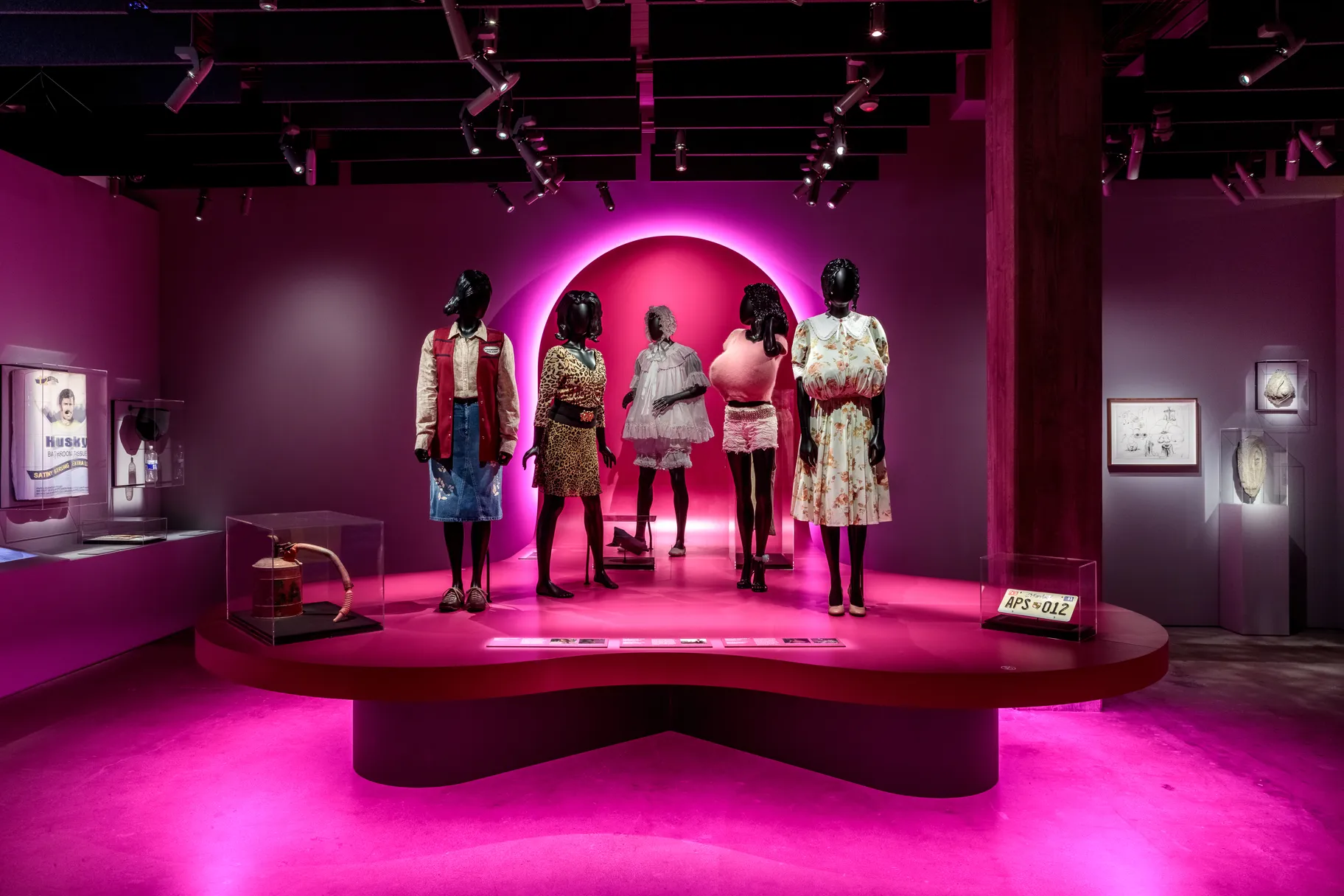
An installation view of the “John Waters: Pope of Trash” exhibit at the Academy Museum of Motion Pictures. Photo by Charles White, JW Pictures. Courtesy of the Academy Museum
Looking at the anti-trans and drag rhetoric nationwide, Waters says societal acceptance for these communities has already been achieved and there’s no going back.
“RuPaul made [drag] acceptable to middle-class America everywhere. They love drag. Gay marriage? Everybody knows somebody who’s been gay married. It's too late.” Waters says. “It's too far accepted. The hotel industry was too late in protesting Airbnb. The taxi business blinked and Uber came in. You can't blink; you lose it. It’s too accepted now.”
He adds that he hopes his films have helped push the needle of acceptance. “I think I made people feel good about themselves and feel that they could win and made people a little less judgmental about things. … My mother told me all her friends used to give her so much trouble about what I was like until their kids took drugs, and then they called my parents and they asked for advice.”
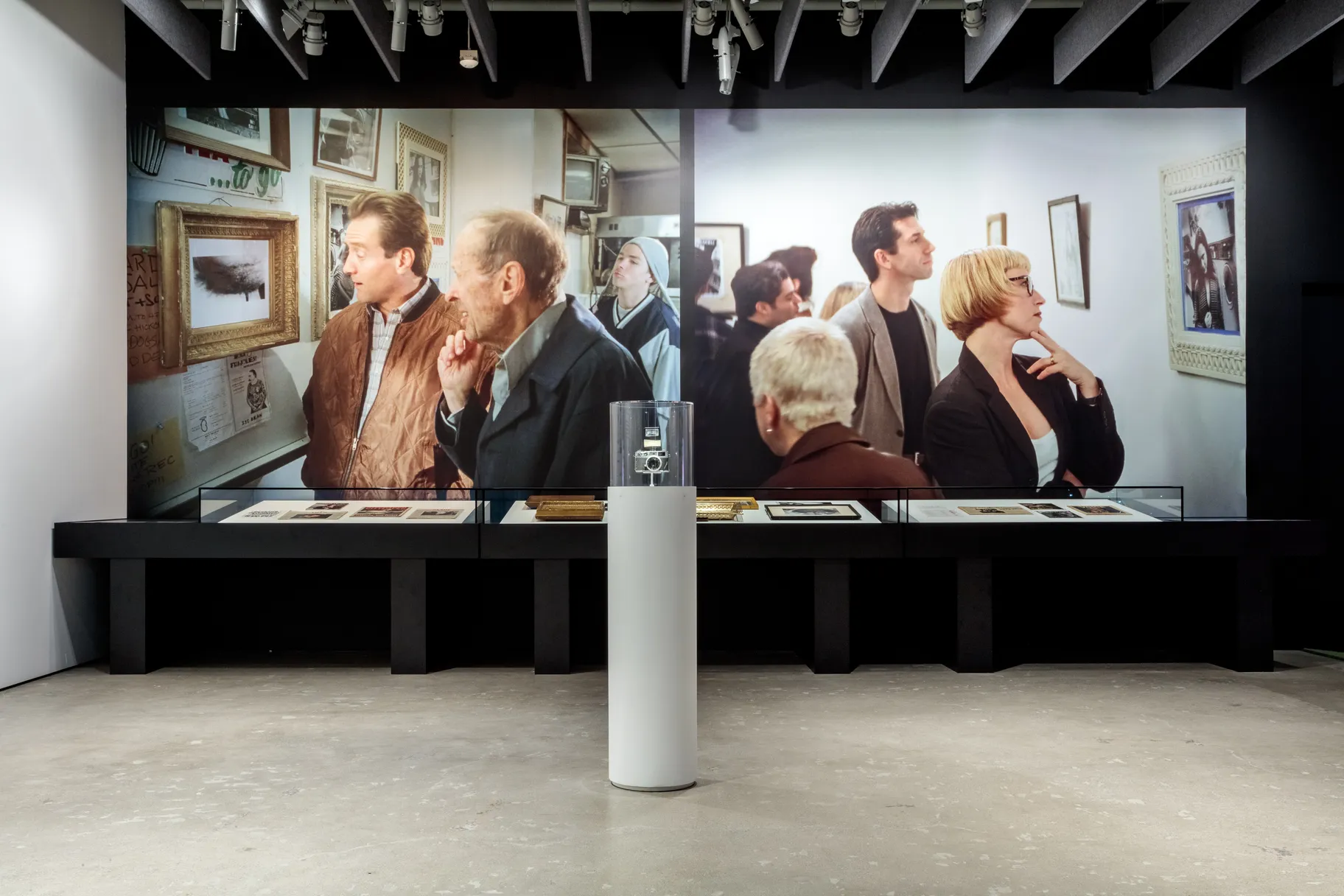
John Waters has a transgressive reputation, but the new exhibit and Hollywood star solidify his crossover into the mainstream. Photo by Charles White, JW Pictures. Courtesy of the Academy Museum.

Film posters from Waters’ oeuvre, part of “John Waters: Pope of Trash” exhibit at the Academy Museum of Motion Pictures. Photo by Charles White, JW Pictures. Courtesy of the Academy Museum.
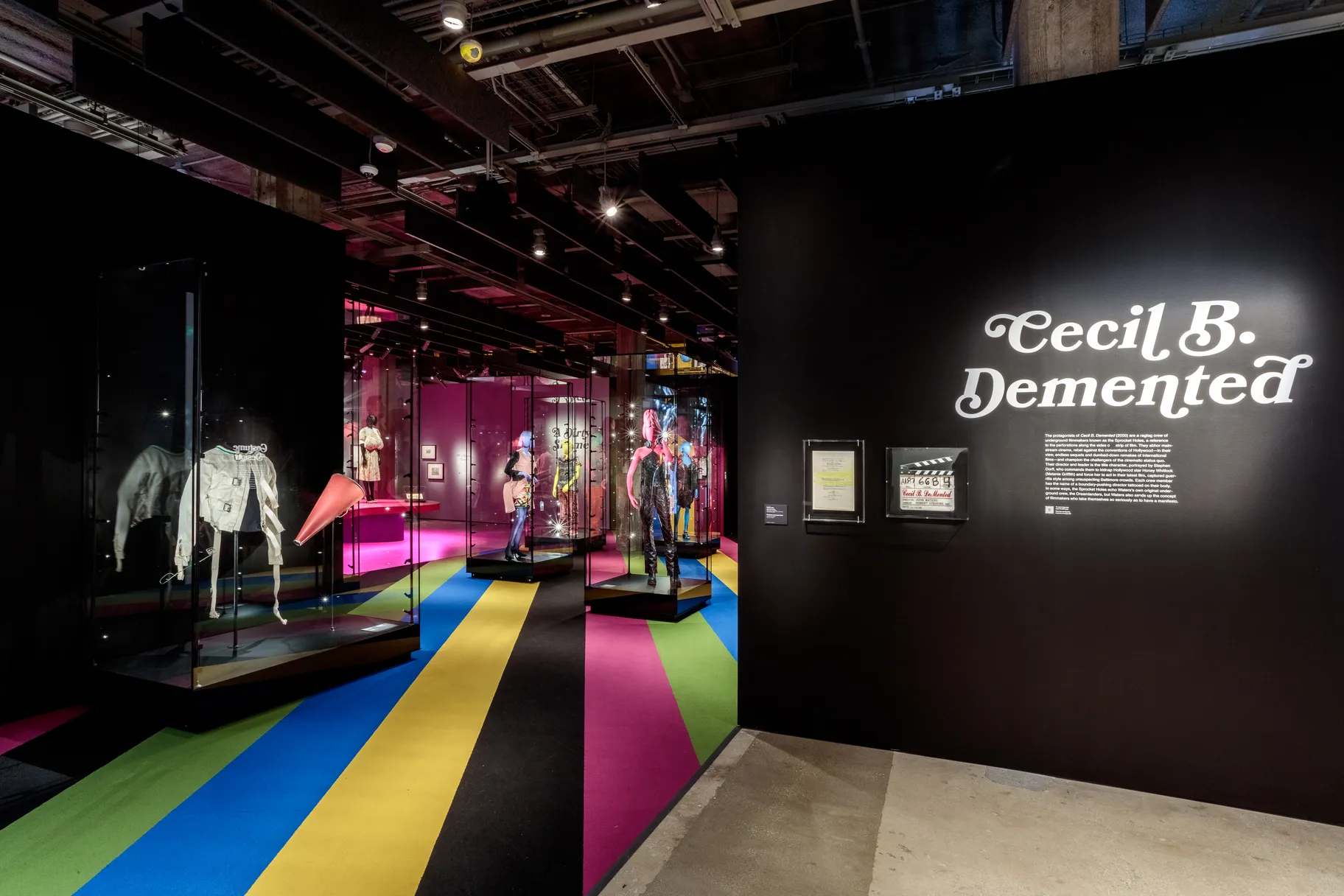
Costumes from John Waters’ “Cecil B. Demented,” a film about renegade filmmakers. Photo by Charles White, JW Pictures. Courtesy of the Academy Museum.
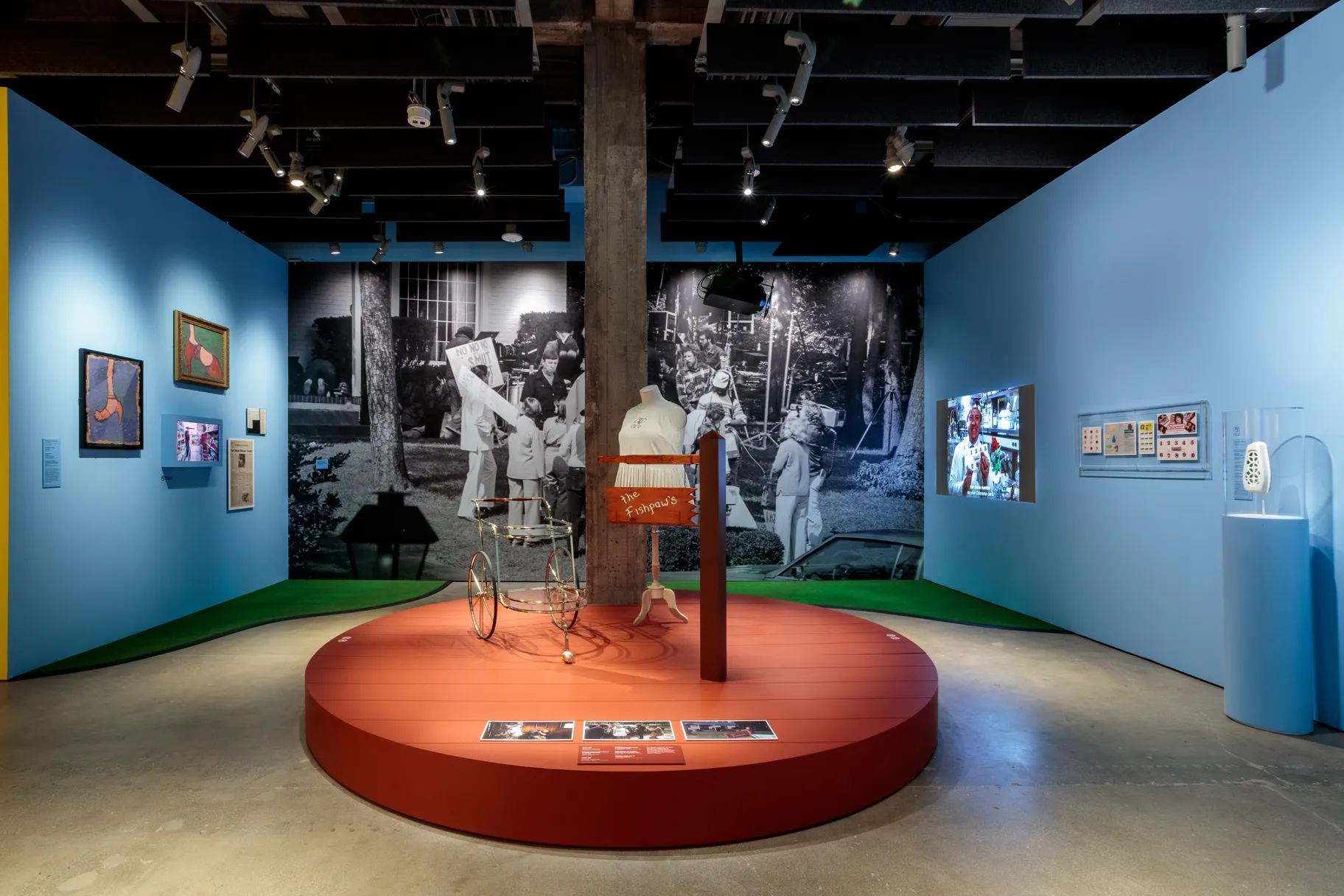
Props from Waters’ films featured in “John Waters: Pope of Trash” exhibit at the Academy Museum of Motion Pictures. Photo by Charles White, JW Pictures. Courtesy of the Academy Museum.

Various film memorabilia including an RV and an electric chair, part of “John Waters: Pope of Trash” exhibit at the Academy Museum of Motion Pictures. Photo by Charles White, JW Pictures. Courtesy of the Academy Museum.
